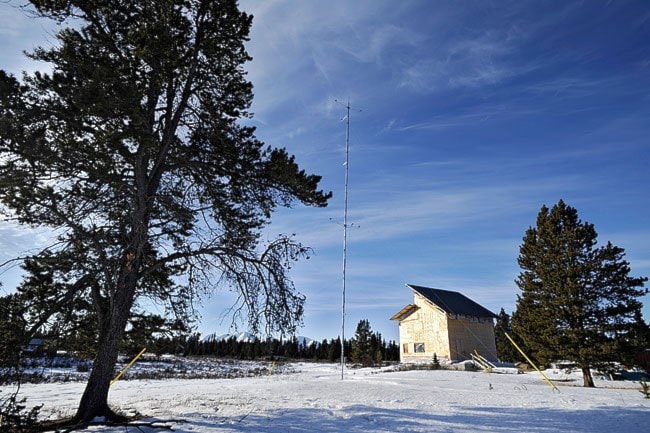Andy Lera is using some old techniques to make something new: the territory’s first Passive House.
The German design standard has been used in Europe for decades but has only recently been embraced in Canada.
Last Thursday, Lera gave a lunchtime lecture on Passive House as part of a series, Conversations in Conservation, sponsored by Yukon Energy.
With the territory facing a looming shortage of electricity, it’s no surprise to Lera that the utility is interested in the building principles.
Passive Houses can be heated by only a fraction of the energy it would take to keep a conventionally built house warm.
To be certified as a Passive House, a building can use no more than 15 kilowatt hours of energy per square metre.
Buildings must also be well-sealed. Certification requires that a building leak no more air than 0.6 times the house volume per hour. By comparison, Whitehorse’s Green Building standards, which are some of the highest in the country, require only 1.5 air exchanges per hour.
“It’s a similar concept to Yukon Super Green home except that Passive House is optimized in every way,” said Lera.
For instance, in northern latitudes windows on the southern side of the house are maximized so that sunlight helps heat the house.
Passive House consultants like Lera depend on computer models to predict how a house will behave before it’s built.
“It’s not a prescribed building method, it’s not a brand name. It’s more of a building concept,” he said.
Lera’s interest in Passive House was piqued on a trip to Europe five years ago.
“It’s a different mentality there,” he said. “People here are looking at buying a house and flipping it in 10 years, whereas in Europe a lot of people are looking at a house and saying, ‘My children are probably going to live in this and is it still going to be usable at that point?’
“I constantly saw houses that were 300, 400 years old that were still being lived in.”
Decades ago Europe started to embrace the principles of Passive House. More than 30,000 commercial and residential buildings have been certified in more than 20 countries.
North America, because it’s so far behind Europe in this kind of construction, has a chance to learn from the mistakes that they’ve made, but that’s not really happening, said Lera.
He points to the practice of wrapping the outside of houses in foil-backed insulation as an example.
If not done right, it can lead to problems like mould and rot.
“You’re wrapping your house on the outside with a vapour barrier,” said Lera. “It’s aluminum foil and you tape all the seams so the atmosphere can’t get out.
“It’s exactly what they did 30 years ago in Sweden.
“When I started to explain to them how we build here and they looked at me and they said you know we tried that 20 years ago, 30 years ago and we stopped doing it because our walls were rotting out.”
Now, rather than wrap their homes in foil, Swedes instead insulate their interior walls and build their exterior walls double-wide, said Lera.
Building to a Passive House standard costs, on average, about 14 per cent more. However, that premium can be made up in energy savings in only a couple of years, said Lera.
He’s doing all the work himself, which will save him some money but costing him time.
Lera started construction three years ago and hopes to be finish things up this fall.
“For the last couple of years I’ve been saying it’s going to be a year. I hope that now it’s really going to be a year,” he said.
All the wood for the houses came from logs that Lera milled himself.
The insulation that’s going into the walls is waste sheep wool that he bought from a farm in Oregon.
And although there is electricity already running to his current house, Lera is building the new one completely off-grid.
He’s already set up equipment to test the capacity of both wind and solar on the location.
While Passive House proponents often tout the potential energy savings of the buildings by saying they can be heated with only a hair dryer, Lera has something else planned that’s more in keeping with his Finnish roots
In the second-floor bathroom he’s building a wood-fired sauna that will be hooked to a boiler.
Lera predicts that he’ll only have to run the sauna once or twice a week to keep the house comfortable.
The stove will also be hooked up to a small electric generator that will sit on the stove and run off the temperature differential. It’s the same principle that allows a stove-top fan to move hot air.
The biggest challenge so far has been finding windows that will let a decent amount of energy through but also provide adequate insulation, said Lera.
“We have such an extreme climate and such long, cold nights that even a high-quality window can’t keep up, he said.
Being so far north, Lera isn’t sure if he’ll be able to meet the stringent energy standards to achieve Passive House certification, but he’s not too worried about it.
“It doesn’t really matter to me if it’s certified or not,” he said. “I just know that it’s going to be super-efficient. If it meets Passive House standards, that’s excellent.”
Contact Josh Kerr at
joshk@yukon-news.com
